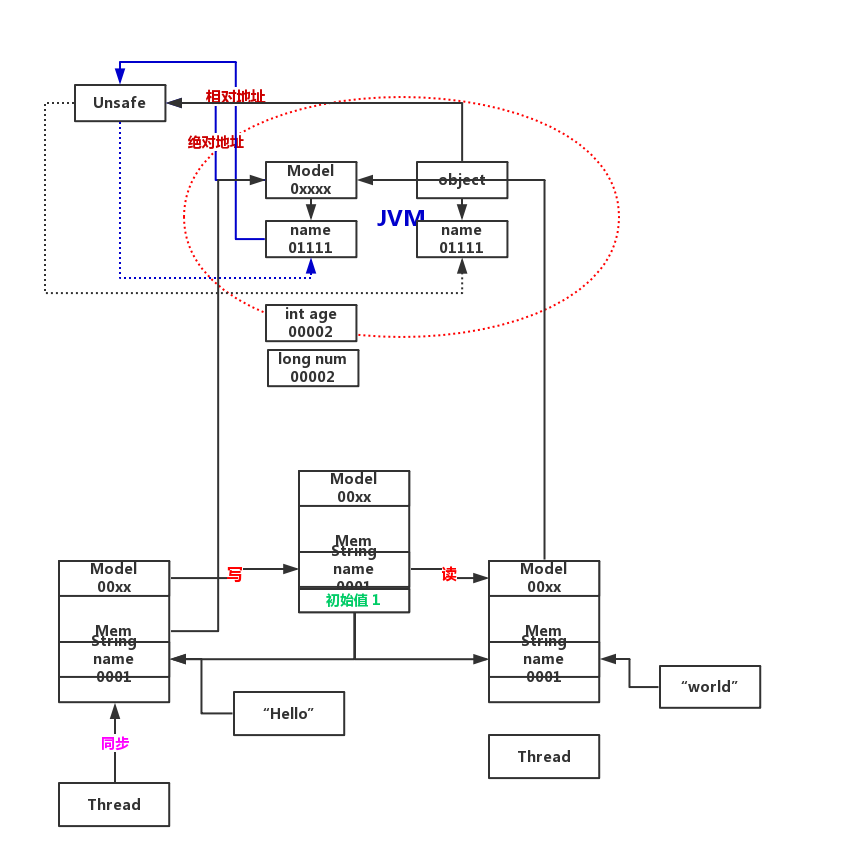https://github.com/mercyblitz/confucius-commons 分析这个工程里的东西。
奇技淫巧出处:
1793 年,马格尔你,英国外交部长,乾隆 80 大寿,演示了 大炮,乾隆说 这是奇技淫巧。
议题
- 四方书揭秘
- 代码工程示范
- 如何选择技术
JAVA SE
分布式
IBM 云计算
微服务 != Spring Boot / Spring Cloud
区块链
大数据
这些名字都是不懂技术的人创造出来的名词,他们都不懂技术细节。还是基础比较好。
基础很重要
-
Java 1.4
- NIO
-
Java 1.5
- For Each
- 泛型
- J.U.C
- 可变参数
- Iterable<T>
- Collection
- Array[]
- Formatter
- 枚举
- Annotation
-
Java 1.6 (SCJP)
java.util.ServiceLoader
-
Java 7
- Try 升级
- NIO
- Path 抽象
- AIO
- AutoCloseable
- Switch 提升
- 字符串
- 泛型升级
- HashMap<String> map = new HashMap<>();
-
Java 8
- Lambda
- Stream API
- DateTime API
- Interface default 实践
- Optional
- Java concurrency
- CompletableFuture
- StampLock
- Accumulator
Practical.API.Design.Confessions.of.a.Java.Framework.Architect.pdf
告诉你怎么设计 API
告诉你版本的概念
源代码兼容
- Java 语言级别的兼容
二进制兼容
Java 字节码的兼容(Java 4 Java 5)
JDK 4 和 JDK 5 的一些字节码是不一样的。
类的不兼容。
Function 接口的
例子:
mercyblitz/confucius-commons : 链接
UnsafeUtils.java 种,稍有不慎 JVM 就挂掉了。
- 在 Abstract 里边设置了常量。
Unsafe -> 内存偏移量来调整字段状态
- 写操作
- 直接写
- volatile 写
- CAS
Model 对象的内存的绝对地址 0XXXX
- int value 内存的相对地址 00001
- int value = 0XXXX + 00001
主要是利用内存偏移量,直接操作内存

普通的 get ,set
偏移量都是一样的。它的内存地址是不一样的,但是内存的偏移量都是一样的。
顺序写。
所有的对象都存在 Object 对象
object 内存空间?
字段占用偏移量
- Object 拓扑结构,
- Unsafe 偏移量
- JVM 相关的特性
JAVA 9 里边的 VarHandle.java 中也有偏移量。有所谓的弱和强的方法。
Native Method
原生方法 底层方法。
Native = OS 只是一个操作系统的方法,C 、 C++
mercyblitz :
WindowsRegistry.java
java.util.prefs.Preferences 这个是在 Windows 上操作 注册表 。
1
2
3
4
5
6
7
8
9
10
public class PreferencesTest {
public static void main(String[] args) {
// 很像 ZK Node
Preferences preferences = Preferences.userRoot();
preferences.put("Hello", "world");
preferences.get("Hello", "");
System.out.println(preferences.get("Hello", ""));
}
}
windows 会提示你,当前用户还是机器。
1
2
3
4
5
6
7
8
9
10
11
12
13
14
15
16
public class WindowsRegistryTest {
@Test
public void testInit() {
if (SystemUtils.IS_OS_WINDOWS) {
WindowsRegistry user = WindowsRegistry.currentUser();
String key = "\\Software\\Microsoft\\Windows\\CurrentVersion\\Run";
String name = "ABC";
String value = "value.exe";
user.set(key, name, value);
user.flush(key);
Assert.assertEquals(value, user.get(key, name));
user.remove(key, name);
}
}
}
这就是一个类似的方式去进行操作。 调用 Windows 的 API。
我有 ?JAVA 运行 Node.js 程序怎么办?我写一个 进程执行器 ProcessExecutor,
java.lang.Process
1
2
3
4
// 子进程
public Stream<ProcessHandle> children() {
return toHandle().children();
}
IDEA 也是一个父线程控制子线程,然后控制进程
1
2
3
4
5
6
7
public class ProcessExecutorTest {
public void testExecute2() throws Exception {
ProcessExecutor executor = new ProcessExecutor("java","-version");
executor.execute(System.out, 2000);
}
}
- idea
- java
- Java -version
- Java -version
- Java -version
- Java -version
- java
Runtime exec 是一样的。
流:
- 输入流 in
- 输出流 out
- 错误流 err
进程会有一个超时管理。还可以有嵌套的情况。
虚拟化技术可以限制计算机的 CPU 和 内存 的利用率。
java 改注册表,进行进程管理都可以。
debug 的时候,可以阻断这个线程。
1
2
3
4
5
6
public class StackTraceDemo {
public static void main(String[] args) {
Stream.of(Thread.currentThread().getStackTrace())
.forEach(System.out::println);
}
}
堆栈。
Spring Boot 里的
SpringApplication 里边推断我的主类。
org.springframework.boot.SpringApplication
1
2
3
4
5
6
7
8
9
10
11
12
13
14
15
// 推断我的主类
private Class<?> deduceMainApplicationClass() {
try {
StackTraceElement[] stackTrace = new RuntimeException().getStackTrace();
for (StackTraceElement stackTraceElement : stackTrace) {
if ("main".equals(stackTraceElement.getMethodName())) {
return Class.forName(stackTraceElement.getClassName());
}
}
}
catch (ClassNotFoundException ex) {
// Swallow and continue
}
return null;
}
java 只告诉你类名,方法名。
java.lang.Throwable#getStackTrace @since 1.4
找个地方记一下。
如何选择技术
这个方法提出来,对性能影响很大。
预热:
JVM 启动的时候,不要看它第一次运行的结构,要看它第二次运行的结果。
取到我当前这个类调用是谁?
我通过堆栈找我这个类。
JVM
- 栈
- 帧 Frame
- method 1 -> method 2
栈就是
1 method 2
2 method 1
jdk.internal.reflect.Reflection#getCallerClass
1
2
3
@CallerSensitive
@HotSpotIntrinsicCandidate
public static native Class<?> getCallerClass();
获取当前的调用类。
A -> B -> C
current class = c
+ 1 B
+1 A
native 方法会快。
字节码。
有所谓的调用 链路,就是压栈,压帧。
一个是字节码,一个是堆栈来操作的。
Spring Boot 会把当前线程,当前类打出来。
当 打印很多的时候,性能提升一百倍以上。
怎么学到的。
Class 里边
java.lang.ClassLoader
1
2
3
4
5
6
7
8
9
10
11
12
13
14
@CallerSensitive
public final ClassLoader getParent() {
if (parent == null)
return null;
SecurityManager sm = System.getSecurityManager();
if (sm != null) {
// Check access to the parent class loader
// If the caller's class loader is same as this class loader,
// permission check is performed.
// 安全检查要检查我当前的调用的类。
checkClassLoaderPermission(parent, Reflection.getCallerClass());
}
return parent;
}
java 6 7 8 都有了
java 9 有了
Stack Walking API
java.lang.Stackwalker
- 得到文件名
- 得到行号
- 得到方法名
- 性能极大的提升
java 是一个很大的体系。
JDK 的 API 更有用。
JAVA 6 3000 多个 API
JAVA 7
JAVA 8 更多
com.sun.deploy.model.Resource
- String getURL();
- String getVersion();
- long getLastModified();
- 。。。。
org.springframework.core.io.Resource
- URL getURL() throws IOException;
- URI getURI() throws IOException;
- File getFile() throws IOException;
- String getFilename();
就是抄袭么?哈哈哈哈
怼过 josh Long,抄袭,极大的抄袭
Exception 慢的话,
ClassLoader 怎么知道我加载的层次呢?
ClassPath 的代码
-classpath-cp
ClassPathUtils
- 一个是 Root 的 classPath
- 一个是我们自己的 classPath
堆栈的速率的提高:
https://github.com/mercyblitz/confucius-commons/blob/master/confucius-commons-lang/src/test/java/org/confucius/commons/lang/reflect/ReflectionUtilsTest.java